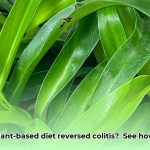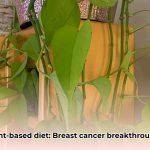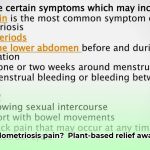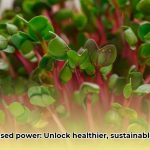Interested in feeling better and helping the planet? A whole-foods, plant-based diet can be a powerful choice for both your health and the environment. It’s far more than just salads; it’s about making informed food decisions that promote well-being and sustainable practices. This guide provides a foundational understanding, practical tips for transitioning your kitchen, and insights into sustainable farming. Discover how your food choices affect the planet and how embracing plant-based options can significantly reduce your environmental impact, paving the way for a healthier and more sustainable lifestyle. For a helpful shopping guide, check out this plant-based grocery list.
Understanding the Benefits of a Whole Food Plant-Based Diet
A whole food plant-based (WFPB) diet focuses on consuming primarily whole, unrefined plant foods. This includes fruits, vegetables, whole grains, legumes, nuts, and seeds. It minimizes or excludes animal products, processed foods, and added oils.
Environmental Impact of Animal Agriculture
Animal agriculture significantly contributes to environmental problems. Raising animals for food requires vast resources: land for grazing and growing feed, substantial amounts of water, and significant energy for raising and transporting livestock. This process generates considerable greenhouse gas emissions, including methane, a particularly potent gas. Compared to growing crops for direct human consumption, animal agriculture has a much larger environmental footprint.
“Shifting towards plant-based diets is crucial for mitigating climate change and ensuring global food security,” stated [Dr. Hans Herren, World Food Prize Laureate and President of the Millennium Institute].
The demands of animal agriculture on land and water resources outweigh those of plant-based alternatives.
Health Benefits of Plant-Based Eating
A WFPB diet is associated with numerous health advantages. Research indicates that individuals who predominantly consume plant-based foods have a reduced risk of developing heart disease, type 2 diabetes, certain types of cancer, and obesity. A plant-based diet, rich in fiber, vitamins, and minerals, can strengthen the immune system and promote increased energy levels, leading to more consistent energy throughout the day and improved sleep quality.
Mitigating Environmental Risks of Plant-Based Farming
While plant-based diets generally have a lower environmental impact than those heavy in animal products, it’s important to acknowledge that all food production has some impact. To minimize any adverse effects, it’s crucial to support sustainable farming practices.
Practical Steps for Embracing a Plant-Based Diet
Transitioning to a plant-based diet can be a gradual and enjoyable process. Here’s a step-by-step guide to help you:
- Plan Your Meals: Create a weekly meal plan filled with colorful fruits and vegetables, hearty whole grains, protein-rich legumes (like lentils and beans), and healthy nuts and seeds. Discover a variety of recipes to keep your meals exciting.
- Increase Plant-Based Foods: Gradually increase the portion of plant-based foods on your plate at each meal. Start by swapping out one or two meals per week with plant-based alternatives.
- Minimize Processed Foods: Focus on whole, unprocessed plant foods. Reduce your intake of processed vegan products, which can be high in sodium, sugar, and unhealthy fats.
- Embrace Experimentation: Explore new recipes and ingredients. This is a great opportunity to discover new flavors and cuisines.
- Read Labels Carefully: Pay attention to ingredient lists and nutritional information, especially when purchasing packaged foods. Look for products with minimal added sugar, salt, and unhealthy fats.
- Minimize Food Waste: Plan meals carefully, store food properly, and use leftovers creatively. Food waste contributes significantly to environmental problems. The United Nations estimates that roughly one-third of the food produced globally is lost or wasted each year.
- Shop Locally (When Possible): Support local farmers markets and community-supported agriculture (CSA) programs. This reduces transportation emissions, supports local farmers, and often means fresher, tastier produce.
- Cook More Often: Homemade meals are generally healthier and more environmentally friendly. They contain fewer processed ingredients and less packaging.
Addressing Potential Challenges
Switching to a plant-based diet may present some challenges. It’s important to be aware of these and take steps to address them:
- Nutrient Deficiencies: Ensure you’re getting all the nutrients your body needs. Vitamin B12, iron, calcium, omega-3 fatty acids, and vitamin D are nutrients that sometimes require extra attention in a plant-based diet.
- Social Situations: Navigating social situations and eating out can sometimes be challenging. Plan ahead, research restaurants with plant-based options, and don’t be afraid to ask for modifications.
- Cravings: You may experience cravings for foods you’re used to eating. Be patient with yourself, find healthy plant-based alternatives, and focus on the positive aspects of your new diet.
Sustainable Farming Practices
The way our food is grown is just as important as what we eat. Sustainable farming practices are crucial for a healthy planet. These practices prioritize soil health, biodiversity, and fair labor.
Key Strategies for Sustainable Agriculture
- Diversify Crops: Crop rotation prevents soil depletion and reduces the need for synthetic fertilizers. It also helps control pests and diseases naturally.
- Reduce Reliance on Synthetic Inputs: Organic farming minimizes the environmental impact of chemical fertilizers and pesticides.
- Optimize Water Use: Efficient irrigation techniques, such as drip irrigation, conserve water.
- Protect Biodiversity: Maintaining diverse ecosystems on and around farms supports natural pest control and improves soil health.
- Minimize Transportation: Buying locally sourced foods reduces fuel consumption and emissions associated with transportation.
- Regenerative Agriculture: Focuses on practices that restore and enhance soil health, increase biodiversity, and improve water management.
“Regenerative agriculture practices enhance soil health, sequester carbon, and promote biodiversity, leading to more resilient and sustainable food systems,” said [Dr. Jonathan Lundgren, an agroecologist and CEO of Blue Butterfly Farm].
The Role of Consumers
Consumers play a vital role in supporting sustainable agriculture. By making informed choices, we can encourage farmers to adopt more environmentally friendly practices.
- Buy Local and Seasonal Produce: This reduces transportation emissions and supports local farmers.
- Choose Organic and Regeneratively Grown Foods: Look for certifications that indicate environmentally friendly farming practices.
- Reduce Food Waste: This conserves resources and reduces the environmental impact of food production.
- Support Companies Committed to Sustainability: Choose brands that prioritize sustainable sourcing and packaging.
Nutritional Considerations
While a WFPB diet offers many health benefits, it’s important to pay attention to certain nutrients that may require special consideration:
| Nutrient | Potential Deficiency | Sources in a Plant-Based Diet | Considerations |
|---|---|---|---|
| Vitamin B12 | Common | Fortified foods (plant-based milks, nutritional yeast), supplements | Essential for nerve function and red blood cell production. Supplementation is often recommended. |
| Iron | Possible | Legumes, dark leafy greens, fortified cereals | Absorption can be enhanced by consuming iron-rich foods with vitamin C-rich foods (e.g., lemon juice on spinach). |
| Calcium | Possible | Leafy greens (kale, collard greens), fortified plant milks, tofu | Choose calcium-set tofu. |
| Omega-3 Fatty Acids | Possible | Chia seeds, flaxseeds, walnuts, algae-based supplements | ALA (alpha-linolenic acid) is a precursor to EPA and DHA. Conversion rates can be low, so consider an algae-based supplement for direct EPA and DHA intake. |
| Vitamin D | Possible | Fortified foods, sunlight exposure, supplements | Important for bone health and immune function. Supplementation may be necessary, especially during winter months or for individuals with limited sun exposure. |
Note: This table provides a general overview. Individual needs may vary. It’s always best to consult with a registered dietitian or healthcare professional for personalized dietary advice.
A Powerful Tool for Sustainable Living
Adopting a WFPB diet is a powerful step toward a more sustainable lifestyle. By making informed food choices and supporting sustainable farming practices, you can reduce your environmental impact and improve your health. Even small changes can make a significant difference over time. Embrace the journey to a healthier, more sustainable you!
Minimizing the Impact of Plant-Based Food Production
How to mitigate environmental risks of plant-based farming involves a multifaceted approach. Here are some key strategies:
- Diversify Crops: Rotating crops helps prevent soil depletion and reduces the need for synthetic fertilizers.
- Reduce Reliance on Synthetic Inputs: Organic farming, with its emphasis on natural fertilizers and pest control, significantly minimizes the environmental impact from fertilizer runoff, a major water contaminant.
- Optimize Water Use: Employing efficient irrigation techniques like drip irrigation reduces water waste.
- Protect Biodiversity: Maintaining diverse ecosystems on and around farms supports natural pest control and improves soil health.
- Minimize Transportation: Buying locally sourced plant-based foods shortens the supply chain, reducing fuel consumption and emissions.
- Reduce Food Waste: This simple act has a huge impact. Proper storage and mindful consumption significantly reduce environmental burden.
“Sustainable practices minimize the environmental footprint of agriculture,” affirms [Dr. Rattan Lal, Distinguished University Professor of Soil Science and
- Plant-based Diet Colitis Remission: Success Stories - December 18, 2025
- Plant Based Diet Breast Cancer: Research-Based Benefits - December 16, 2025
- Plant-Based Diet Ulcerative Colitis Remission: Proven Benefits - December 15, 2025










